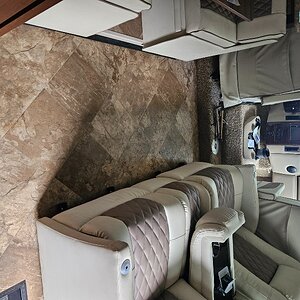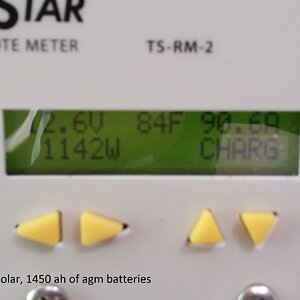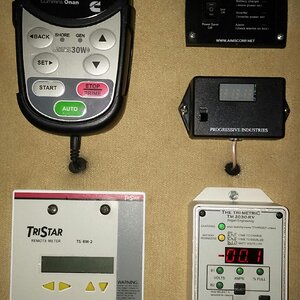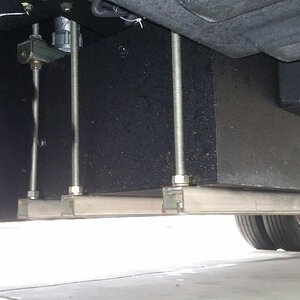AndreandElisha
RVF Regular
- Joined
- Oct 9, 2020
- Messages
- 8
- RV Year
- 2004
- RV Make
- Forest River
- RV Model
- Georgetown XL 346
- RV Length
- 35
We recently had 3 385 watt solar panels installed along with a victron multiplus 3000 watt inverter. Before, we had battery power for lights and used the generator for 110 power if not plugged in. Batteries held a decent charge and charged fairly quickly with the generator.
Now, when we have sun we can run basically everything in the RV except the AC. But as soon as the sun goes down, we have almost zero battery power. We can no longer charge the batteries with the generator, we have to actually run the RV engine! And we still have to run the generator if we want any kind of power. And I am talking 1 reading light. Everything else is completely shut off. Microwave unplugged, inverter off, converter unplugged, we don't even leave the water pump on.
We have a 2004 Georgetown XL 346 which has the chassis battery and 2 12v house batteries under the stairs. We would like to increase our house batteries but not sure where to put them. Plus, I don't feel that adding more batteries is going to fix the problem.
Now, when we have sun we can run basically everything in the RV except the AC. But as soon as the sun goes down, we have almost zero battery power. We can no longer charge the batteries with the generator, we have to actually run the RV engine! And we still have to run the generator if we want any kind of power. And I am talking 1 reading light. Everything else is completely shut off. Microwave unplugged, inverter off, converter unplugged, we don't even leave the water pump on.
We have a 2004 Georgetown XL 346 which has the chassis battery and 2 12v house batteries under the stairs. We would like to increase our house batteries but not sure where to put them. Plus, I don't feel that adding more batteries is going to fix the problem.












